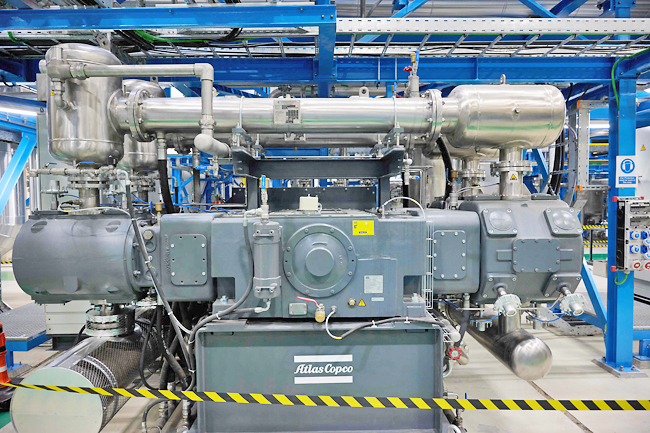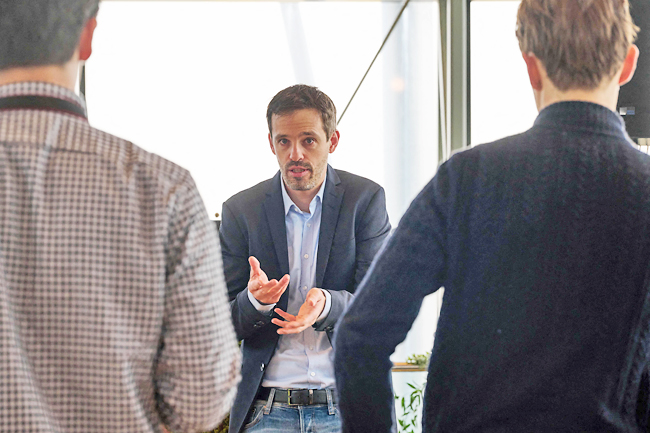HELLISHEIDI (AFP) – A Swiss start-up unveiled on Wednesday its second plant in Iceland sucking carbon dioxide from the air and stocking it underground, scaling up its capacity tenfold with the aim of eliminating millions of tonnes of carbon dioxide CO2 by 2030.
Dubbed Mammoth, the plant lies just a few hundred metres (yards) from its little sister Orca, a pioneering facility opened by Swiss start-up Climeworks in September 2021 in the middle of a moss-covered lava field about a half-hour drive from the capital Reykjavik.
Here, 12 containers similar to those used in maritime transport are stacked up against a backdrop of mountains.
In recent days, fans in the containers began drawing in ambient air and releasing it, largely purified of CO2, through vents at the back.
It’s all done through a chemical process, and powered by the nearby geothermal plant ON Power.
By the end of the year, 72 units will be installed around the plant where the captured CO2 is compressed and dissolved in fresh water before it is injected under high pressure into the basalt rock underground, locking away the main culprit behind global warming.





At a depth of 700 metres, the solution fills the rock’s cavities and the solidification process begins – a chemical reaction turning it to calcified white crystals that occurs when the gas comes in contact with the calcium, magnesium and iron in the basalt.
It takes up to two years for the CO2 to petrify, according to the Icelandic group Carbfix that developed the process.
Some 10,000 tonnes of CO2 per year have been stocked using direct air capture with carbon storage (DACCS) techniques around the world, including 4,000 tonnes by Orca with the remainder mostly done at experimental facilities.
When Mammoth is fully operational, it will be able to remove 36,000 tonnes of CO2 from the air per year.
“We started with milligrammes of CO2 captured in our lab 15 years ago and now it’s kilos, tonnes, thousands of tonnes,” said Climeworks founder and co-chief executive Jan Wurzbacher.
Climeworks expects to have a capacity of several million tonnes by 2030, with projects of other start-ups taking total capacity up to around 10 million tonnes per year.
Climeworks hopes it can raise capacity to a billion tonnes per year by 2050.
But that’s still a drop in the bucket compared to the 40 billion tonnes of CO2 emitted around the world last year alone.
By pulling CO2 from ambient air, Climeworks’ plants are different from more traditional types of CCS projects at highly-polluting industrial smokestacks or those reusing CO2 instead of stocking it.
For each tonne of CO2 stocked, Climeworks creates a carbon credit that enables its clients (including large corporations such as Lego, Microsoft, H&M, Swiss Re, JP Morgan Chase, Lufthansa) to compensate for their greenhouse gas emissions.
The UN’s Intergovernmental Panel on Climate Change (IPCC) said in a 2022 report that no matter how much the world slashes greenhouse gas emissions, removing CO2 from the air and oceans will be necessary to avoid climate catastrophe.
However, the technology is not included in most emissions-reducing scenarios yet as it remains extremely costly and is still in the early stages with limited public funding.







